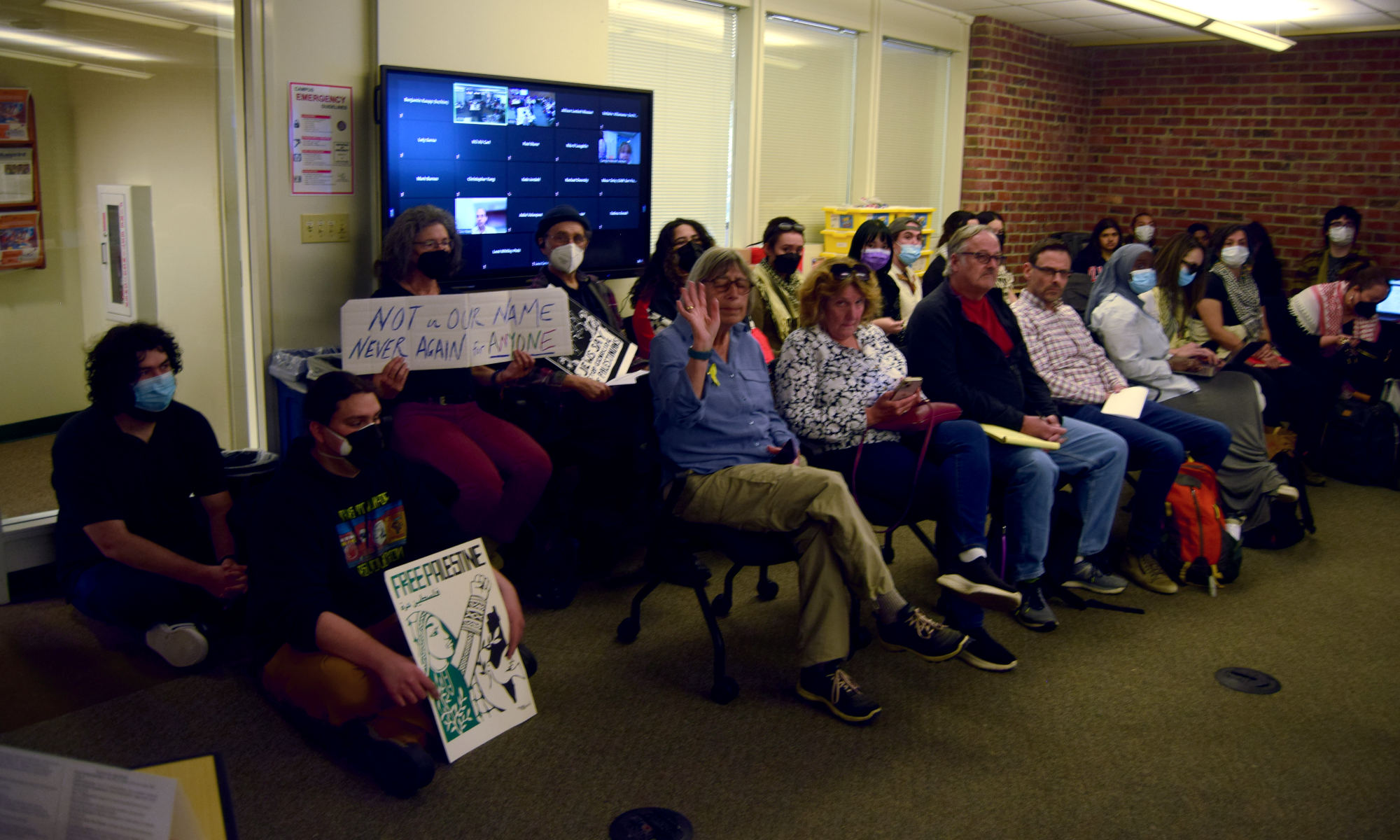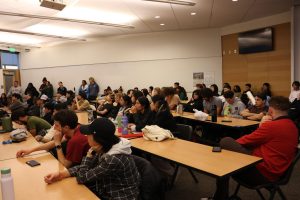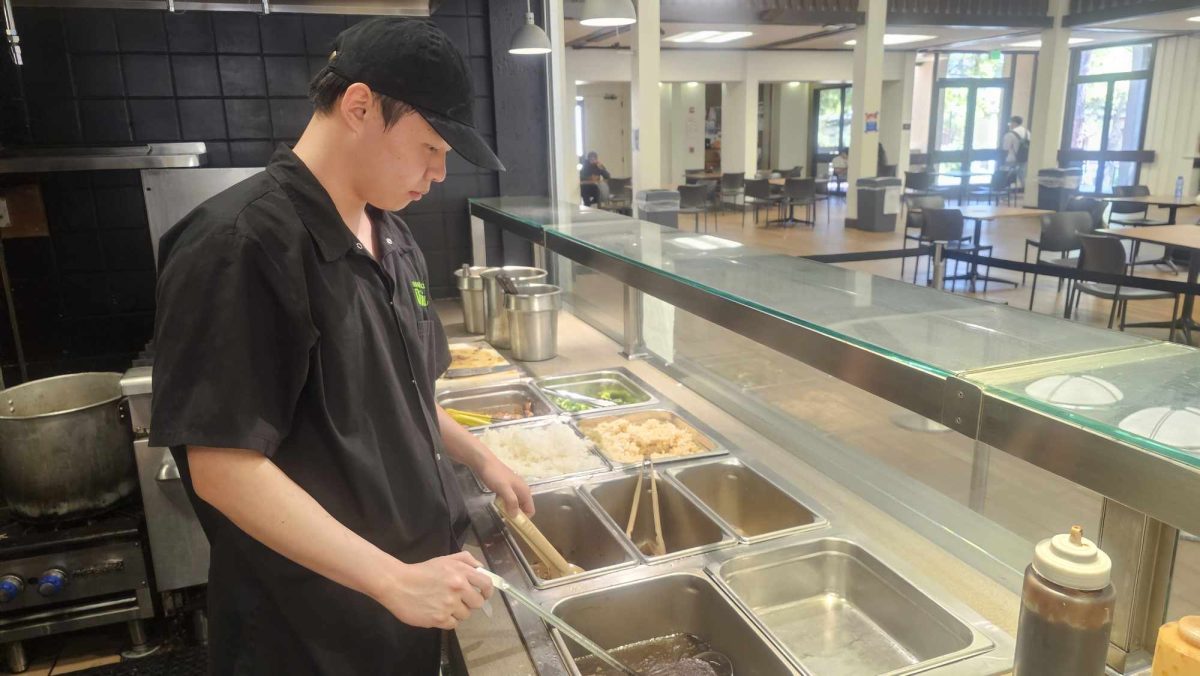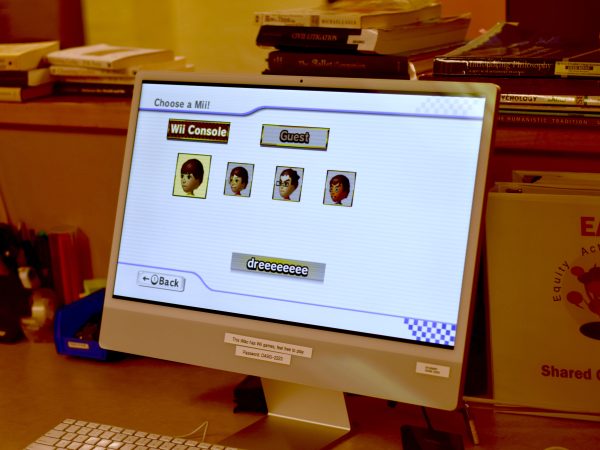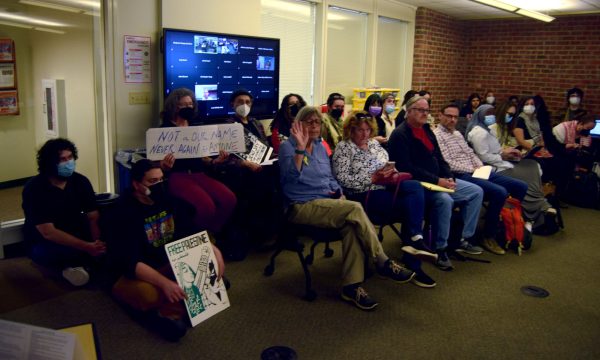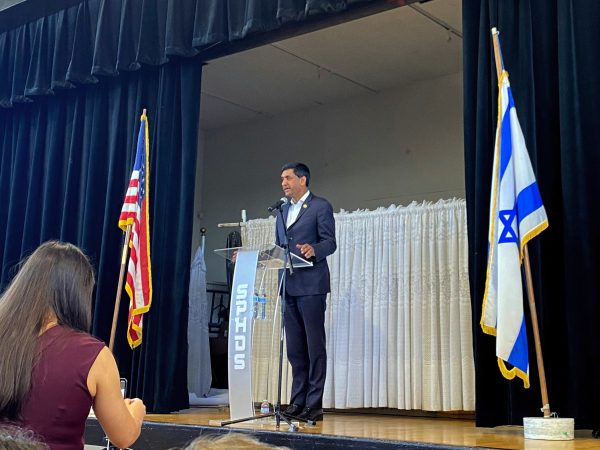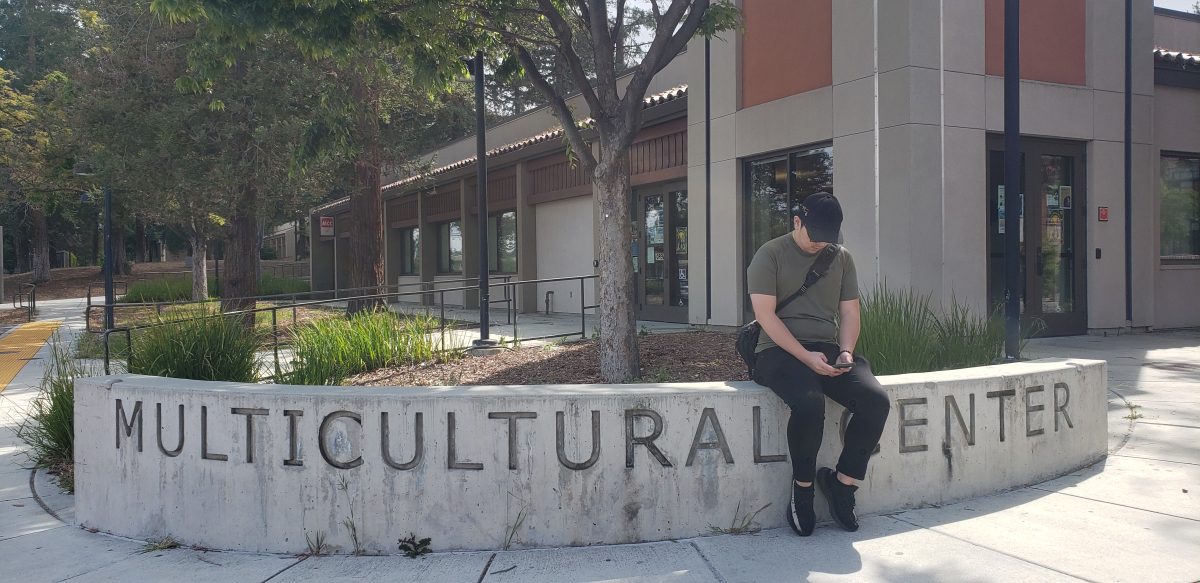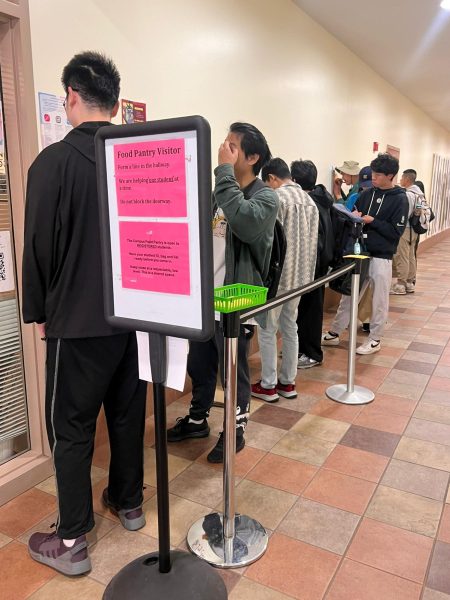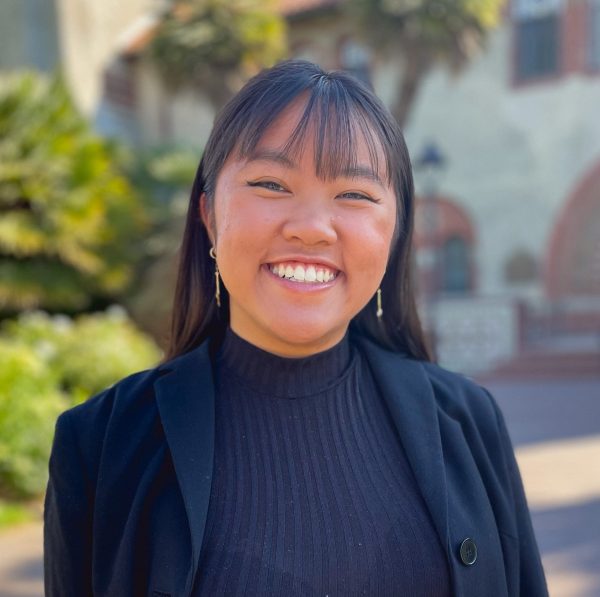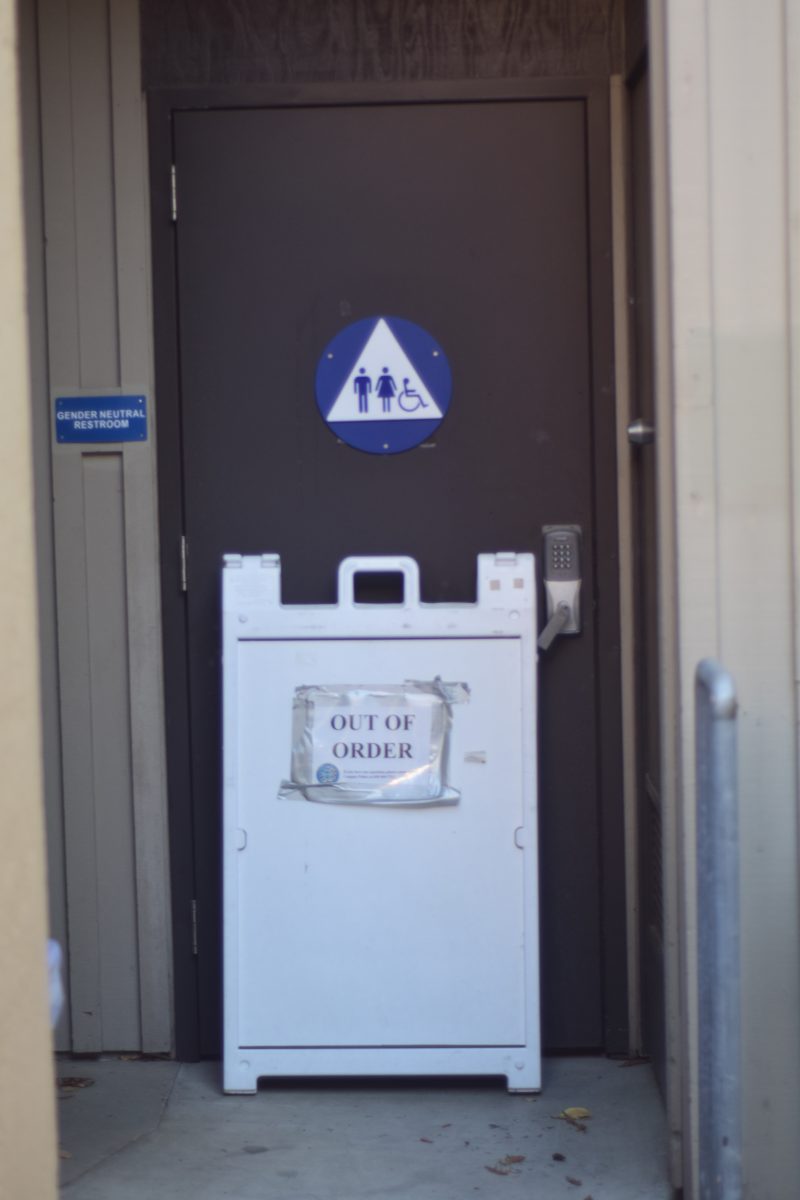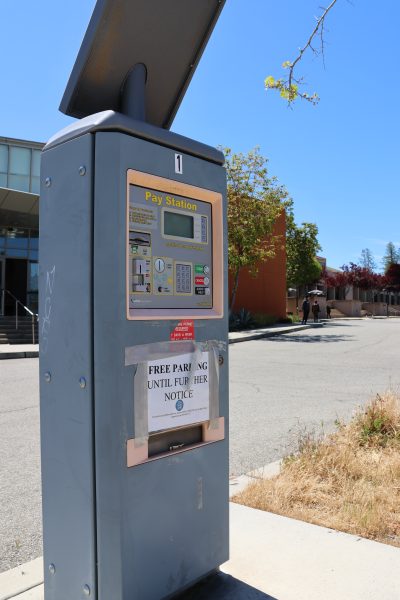When students take a class, many of them don’t stop to think about whether their instructor is part-time or full-time. However, though the quality of the professor isn’t necessarily different, the way part time faculty are treated varies wildly from their full time counterparts.
“We have one group of faculty who are paid pretty well and have a lot of prestige and a lot of tenure protections and then we have part-time faculty who do not (have those things),” John Fox, a former De Anza part-time faculty member and current Foothill full-time sociology instructor, said. “I don’t think the students really know about the inequities (part-time faculty experience).”
In the Foothill-De Anza district, and in higher education across the country, part-time faculty currently make up the majority of faculty, part-time anthropology and gender studies professor Daniel Solomon said. The stated goal in California, as part of Assembly Bill 1725, passed in 1989, is for 75% of instruction to be covered by full-time faculty and 25% by part-timers. At FHDA, part-time faculty are 63% of all faculty, according to data from Faculty Association office manager Susanne Elwell. The Faculty Association is FHDA’s faculty union. As far as instruction, part-time faculty teach just over 50% of credit courses, chief FA negotiator Kathy Perino said.
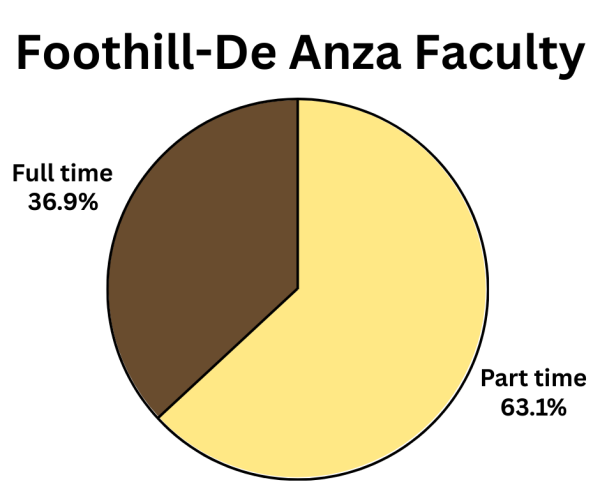
Part-time political science professor Ishmael Tarikh said that part-time faculty are the “workhorses” of the community college system. This is because they carry a significant amount of the instructional work, though the benefits and pay they receive doesn’t necessarily match that, Tarikh said.
“The system comes to a screeching halt as far as instruction is concerned if we don’t work,” Tarikh said.
Rather than having adjuncts be a supplement to full-time faculty, they have become a replacement for full-time faculty, Solomon said.
“It makes more sense if your bottom line is how much productivity (you’re getting from the) money you’re spending. Part-timers are really productive,” Solomon said. “With that logic in mind, the trend, since at least the 1980s, has been to not hire full-timers. And then in order to make up the teaching, they’ll hire a part-timer, (which is) a bargain. The trend has been to emphasize productivity, de-emphasize service to students and de-emphasize having faculty who can give students the attention and care that they need.”
The reason why part-time faculty are considered a “bargain” is because they are paid less and receive less benefits from the district: part-time faculty are paid around 85% of what their peers with similar education and experience receive per class, Solomon said.
“There is no less quality of instruction for a part-time faculty member than a full-time faculty member,” Tarikh said. “But the pay is not in parity.”
In the early 2000s, California required districts to negotiate and define what they consider to be parity — or equality — of pay between full-timers and part-timers, Perino said. FHDA and FA negotiated a goal of 87.5% pay for part-timers compared to full-timers and has since progressed closer to that goal — currently at 85%, having started at 70% in 2006. Additionally, FA has negotiated for increased opportunities for part-time faculty to get raises, as they currently have eight years — or eight “steps” — where they can get raises. Full-timers have 13 years where they are eligible for raises. Perino said the union tries to make progress on both the part-time pay percentage and part-time opportunity for raises in negotiations.
“We have a part time salary issue as part of every yearly proposal,” Perino said. “I’ll admit we don’t have enough steps (currently). It’s not fair. (But) I think we’ve made a lot of progress.”
Solomon, who is also an assistant negotiator for FA, said the negotiations process is delicate and union negotiators have to be conservative with what they ask for, as heavy demands may actually end up stunting progress. Negotiations are also limited by budget constraints from both the governor’s budget and the state chancellor.
Part-time faculty are allowed to work up to 67% of a full-time faculty load per district per year, according to the webpage for the Faculty Association, which is the Foothill-De Anza faculty union.
Because of the cap on the number of classes a part-timer can teach in one district, many part-time faculty do what is referred to as “freeway flying” — they teach in multiple districts at once, flying across freeways to different districts so they can “cobble together a living,” Solomon said.
The actual freeway flying has been reduced to some degree post-COVID for those who have started to teach online, due to higher demand for online classes, Solomon said.

Solomon teaches at both De Anza and Cabrillo College in order to afford living in the Bay Area. He said he currently teaches 67% of a full-time load at De Anza and 40% of a full time load at Cabrillo.
Additionally, Solomon is a part-time assistant negotiator for the Faculty Association union and is active in shared governance committees such as the Resource Allocation and Program Planning committee and the affordable housing task force. For full-timers, union work as well as shared governance is calculated into their workload and their class load requirement is reduced to accommodate that, Solomon said.
Solomon said he considers union negotiating work to be about 20% of a full-time faculty load and his shared governance work to be about 8%. Therefore, his total course load is currently about 135% that of a full-time faculty member. He said he does this to be able to afford the cost of living and to stay out of poverty, though it can have problematic effects.
Solomon said the overwhelming class load makes it difficult to pay attention to students and be accessible as a professor.
“I try to be accessible anyway and I sometimes really succeed. I think I’m a pretty good teacher, but just flatly the emotional cost of it is draining me,” Solomon said. “Saturday and Sunday are seven or eight hour days for me. And Thursday, which I think of as my day off, is just really a half day … I love teaching, I just hate having to always be right here (at my desk).”

Some part-time faculty teach in order to supplement other income. For example, Tarikh is primarily an attorney, but he is also an instructor.
Tarikh said that not being primarily a professor allows him to be a louder voice against injustices part-time faculty face, because he is less concerned about retaliation than his colleagues who are hoping for a full-time position.
Though colleges depend on part-time faculty, they are given little job security as they are only hired term by term — from one quarter to another. Part-timers may not know whether or not they will have classes to instruct, and additionally, when there are budget crises and layoffs, part-time faculty are the first to go, Fox said.
These impacts to part-time faculty are looming due to the current declining enrollment trend, which is being caused by a number of economic factors discouraging people from going to college; such as the strong job market, low unemployment and fear of potential college debt, Tarikh said.
This lack of job security gives part-timers less power to complain about their circumstances because they are considered easily replaceable, Tarikh said.
“We’re (viewed as) interchangeable parts. There’s always going to be someone vying for the job you may complain about,” Tarikh said.
Foothill-De Anza is “one of the nicer districts to work in as a part-time faculty member,” Solomon said. Part-time faculty in other states have even poorer conditions, with about a quarter of part-time faculty members living in poverty, according to a study by the American Federation of Teachers.
Solomon said one thing that makes life difficult as a career part-time professor is having fewer benefits such as less coverage for health insurance premiums — typically around 60% to 80% covered by the district for those who qualify, meaning those who teach at least four classes per year — whereas full time faculty have 85% of their health insurance premiums covered in addition to dental and eyecare. Part-time faculty are not covered for dental care, Solomon said.
“(Dental insurance) really would have come in handy (for me) in 2021 (when) I ground my teeth so hard in my sleep that I split my molar in half and then had to sit with that in my mouth for two months,” Solomon said. “I fixed it myself with dental glue. It was insane.”
Regarding premiums, FA is trying to negotiate that FHDA participate in the state part time benefits program which provides full reimbursements to districts that offer their part-time faculty health benefits — or at least more affordable health benefits, Perino said. If the district chooses to participate, part-timers who work at least 40% of a full-time load would be eligible to pay the same amount as full-timers for health benefits. Participating in the program would not cost the district anything because the money is already available through the state chancellor’s office, however, Perino said the union still has to negotiate how the district would implement it locally.
Part-time faculty are also not eligible to go on sabbatical, which is paid time off to do research or professional development work — work that helps many faculty advance in their career, Solomon said. Full-time faculty are eligible for sabbatical after assuming the role for six years, Solomon said.
“I’m 46 now, so I’m established, but I am still relatively junior because I’m a part-timer. So somebody like me who’s in a junior professor position and who would really like to continue making a career out of this — I need time to do my research and my writing, if not for building up the classes that I teach, than for my own profile, as a researcher and as a scholar, or (for other part-timers) as a scientist or artist,” Solomon said. “But, I’m working 135% of a full-time load (with union work), plus shared governance, plus trying to get enough sleep. So I don’t have time to do this. And what that means is that basically my career has been cauterized.”
Solomon said this becomes a vicious loop where part-time faculty continuously work and crank out classes, but are not able to advance in their career because they are not given time to cultivate the skills they would need to do so.
Solomon said this lack of time also impacts his ability to update lectures and labs for some of his online classes, which presents a negative impact for his students.

“A lot of research says students learn better when (their professors are) full-time,” Fox said. “I want to make it perfectly clear — this is not any disrespect to part-time instructors — it has nothing to do with them. It’s a matter of the support they get from the institution. As a part-time faculty, I didn’t necessarily have the resources to help students as much as full-time faculty.”
For example, part-time faculty do not have their own offices, where full-time professors do, Fox said.
“Just not having a place to talk privately with students is a huge deal,” Fox said. “For part-time faculty, that’s harder to do.”
There is a part-time faculty office on the De Anza campus in what used to be the wine cellar, below the financial aid office. However, this office space came as the result of part-time faculty’s complaints for years, Tarikh said.
“When I first came to De Anza in 2006, I did not have an office to meet with students, even though we have office hours,” Tarikh said. “I was meeting where the athletic department would put their equipment they weren’t using in a trailer, over in a parking lot. Eventually, part-time faculty said we got to have somewhere to meet with students. It’s embarrassing to the institution. You’re walking around opening up classrooms trying to figure out where you can sit down and meet with your students. Eventually we were allowed to use the former winery under the financial aid office, which is a nice office space, even though it’s somewhat like a dungeon.”
However, part-timers used to not be allowed access to their office space during the summer terms, even though many part-time faculty teach then, and are still required to have office hours for their summer classes, Tarikh said.
“It was almost like we were treated like (children),” Tarikh said. “(Like we) couldn’t be trusted in this office space.”
Tarikh said he met with a student in the office anyway “in defiance,” and was confronted by a financial aid office worker, who was allowed to be working in the same building at the time, while part-time faculty were not. The De Anza police came and told Tarikh, who was meeting with a student, that he could leave or be arrested, Tarikh said.
“I’m a part-time faculty member and I’m getting work done which is actually work to the glory of De Anza College,” Tarikh said.
Tarikh said he contacted his department chair and the president of FA at the time, asking them to stand up for him as the faculty union.
“I said this is wrong treatment; I should not be criminalized in my workspace, and I expect the union to do something about how part-time faculty did not have access to the part time faculty offices while we’re teaching during summer sessions,” Tarikh said. “Months went by (and I) didn’t hear anything … I expected my union to lobby and support me and other similarly situated part-time faculty. The policy was changed. But one of the reasons the policy was changed is because I and others were putting up resistance to this ridiculous policy. That (is an) example of how part-time faculty have to fight and claw and scratch for the basic respect that should be accorded to all faculty members at any institution of higher learning.”
Fox said that instances such as this give part-time faculty the message they do not belong, which impacts students as well.
“Students will stay and succeed if they feel like they belong at the institution. If we could get everybody feeling like they belong, then they’ll stay, they’ll persist, they’ll succeed,” Fox said. “But if part-time faculty are always getting the message that they don’t belong, how are they going to deliver that message to the students?”
There are several proposed solutions to part-time faculty’s current experiences and treatment, Fox said.
One solution, Tarikh said, is for shared governance to properly include part-time faculty.
“In our district, specifically, (there is a) gap between the claim of shared governance and the reality of shared governance,” Tarikh said. “(For example), in one fell swoop without any consultation whatsoever, it was determined that there was going to be an additional requirement for part-time faculty at De Anza to (renew their parking permits every quarter). At the time (pre-covid when parking was not free at De Anza), that was a big deal. Part-time faculty were never accorded faculty parking permits without paying additional money for them, whereas full-time faculty did not (have to pay). We were told that we were operating under this shared governance model, and yet decisions were being made that did not include part time faculty.”
Tarikh said there have been recent improvements to include part-time faculty representation “in positions that … we could not (have) even (thought) about being in the room (for previously).”
Additionally, Tarikh said another solution is for the FA and other unions across the state to express stronger support for part-timers.
“I’m rather convinced that the FA union does not properly prioritize the interest of part-time faculty, even though part-time faculty are approximately 60% of the faculty in the district,” Tarikh said.
Tarikh did a survey of the part-time union members at De Anza asking what their top five priority issues were.
“The issue that came back as number one (was) salary and parity of salary (compared to full-time faculty),” Tarikh said. “When I put that on the table as being the result of the survey I had conducted, (and) I brought this to the attention of the FA part-time faculty representative, the response was immediate and unequivocal: ‘We are not going to put that on the negotiating table.’ It was clear that the union was not going to go to bat for part-time faculty.”
Additionally, another priority issue Tarikh said is in need of more union support is to increase the 67% unit cap for part-time faculty.
“Part-time faculty don’t like that across the board,” Tarikh said. “There has been overwhelming support to raise that cap to 80%.”
There have been two times in recent years that a bill to raise the unit cap to 85% has made it through the California state assembly and state senate, only to be vetoed by Gov. Gavin Newsom both times, Tarikh said.
“I am convinced that he would not feel comfortable to do (that) if organized labor (the unions) were more robust in fighting for that very important issue for part-time faculty,” Tarikh said.
FA President Tim Shively said the union has advocated for the unit cap to be raised and is committed to pushing for improvements for part-time faculty.
A broad solution Fox has been working on with the Faculty Association of California Community Colleges is establishing what is called the ‘one-tier’ system — part-time and full-time faculty would have the same pay grades and benefits, only with different contracts depending on how many classes they teach, Fox said.
Under the one-tier model, all faculty would be hired the same way, they would all go through the tenure process and they would all be expected to do service to the college through shared governance work, Fox said.
“There’s always incremental change but it’s just too slow,” Fox said. “It’s time for some systemic change.”
The FACCC board has recently voted in support of a one-tier model, following the California Federation of Teachers which is another one of the dominant unions in California that represent community college faculty, Fox said.
Actually implementing this solution will be a long process, Fox said — the district that initially implemented this model, Vancouver community college district, took 20 years to do so.
The process will likely start with changing laws that wouldn’t present additional costs to schools, but would benefit part-time faculty, such as implementing a tenure process for them. Fox said this would be important to provide part-time faculty with more academic freedom and job security, with less fear of reprisal.
Even though implementing a one-tier system will likely be a long process, Fox said he thinks it is possible.
“It can be done and if we have the will, it will be done,” Fox said. “It’s going to take a lot of work, but everybody really benefits if we do; students, faculty. We have nothing to lose for the world to win.”



